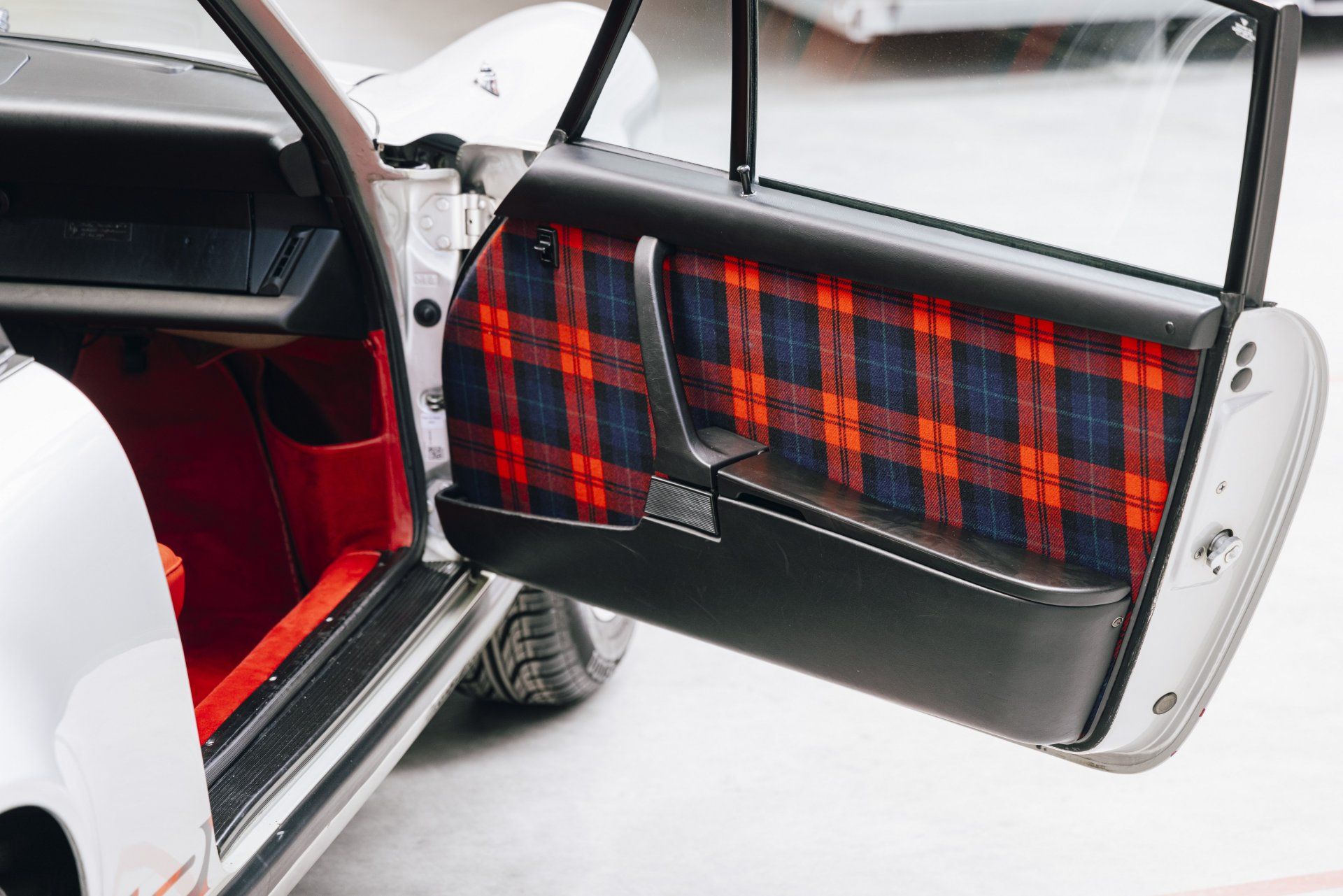

A Pattern with a History: Tartan Fabrics in Porsche 911 Turbo
Tartan fabrics have long symbolized tradition, craftsmanship, and confidence. Fifty years ago, this iconic check pattern found its way into the exclusive design of the Porsche 911 Turbo, where it became a timeless classic, blending the worlds of fashion and sports cars. The year 1976 marked the debut of tartan fabrics in the Porsche 911, and since then, this design has remained an enduring symbol of Porsche’s rich heritage and style.
The story behind the introduction of tartan fabrics into Porsche’s interior design begins with chief designer Anatole Lapine, who one day wore a pair of tartan trousers, sparking the idea to incorporate the pattern into Porsche interiors. Collaborating with Dorothea Müller-Goodwyn, a stylist at Porsche, the team sought high-quality tartan fabric suitable for the rigorous demands of a sports car interior. After exploring options in Scotland, Müller-Goodwyn found the perfect supplier closer to home—50 kilometers from Weissach, Germany, in the town of Dettingen unter Teck. This partnership led to the creation of abrasion-resistant, lightfast tartan fabrics that could withstand the wear and tear of Porsche’s performance vehicles.
The Rich History of Tartan
Tartan is a crisscross pattern traditionally associated with Scottish clans, where each family has its unique tartan design symbolizing their lineage. While in Scotland, it's customary to wear only your clan’s tartan, the law of heraldic arms doesn’t prohibit others from wearing different tartan patterns.
For Porsche, tartan fabric entered the scene in 1973 when the 911 RSR Turbo concept debuted at the International Motor Show (IAA) in Frankfurt. The car’s seat centers and side bolsters were upholstered in Black Watch tartan, a pattern featuring blue, green, and black hues. This was inspired by Lapine’s own tartan trousers and marked the beginning of tartan's association with Porsche interiors.
In 1974, the first Porsche 911 Turbo was presented with McLaughlin tartan in its interior, a red and blue pattern named after the Scottish clan. Chief designer Lapine and his team also introduced the Mackenzie tartan, a mix of beige, red, blue, white, and olive green, further expanding the range of tartan options for Porsche interiors. These tartans, once reserved for the 911 Turbo, eventually became available across the Porsche 911 lineup in the following model years.
A Modern Interpretation of Tradition
Porsche has a long-standing tradition of reinterpreting classic design elements for its modern sports cars. Through collaborations between Porsche Exclusive Manufaktur and the Style Porsche design department, the company continues to create special models that draw on its heritage while utilizing cutting-edge sports car technology. This Heritage Design strategy is reflected in exclusive Porsche models that showcase iconic design elements, such as tartan fabrics, connecting the brand’s storied past with its innovative future.
These special-edition models are more than just cars; they represent a blend of nostalgia and modernity, allowing Porsche enthusiasts to experience a piece of automotive history in a contemporary setting. The tartan fabric, once a hallmark of the Porsche 911 Turbo, is now a symbol of Porsche's ability to combine style, performance, and tradition.
For those looking to own a piece of automotive history, the Porsche 911 remains an iconic symbol of performance and luxury. In Dubai, where the automotive market is as vibrant as ever, finding a used Porsche 911 in Dubai offers the perfect opportunity to experience the blend of tradition and cutting-edge engineering that defines Porsche.
Explore used Porsche cars in Dubai at Auto Trader UAE. Whether you're looking for a Porsche 911 or another classic model, visit Auto Trader UAE for the latest listings of used cars in Dubai, where style and performance meet on the road.